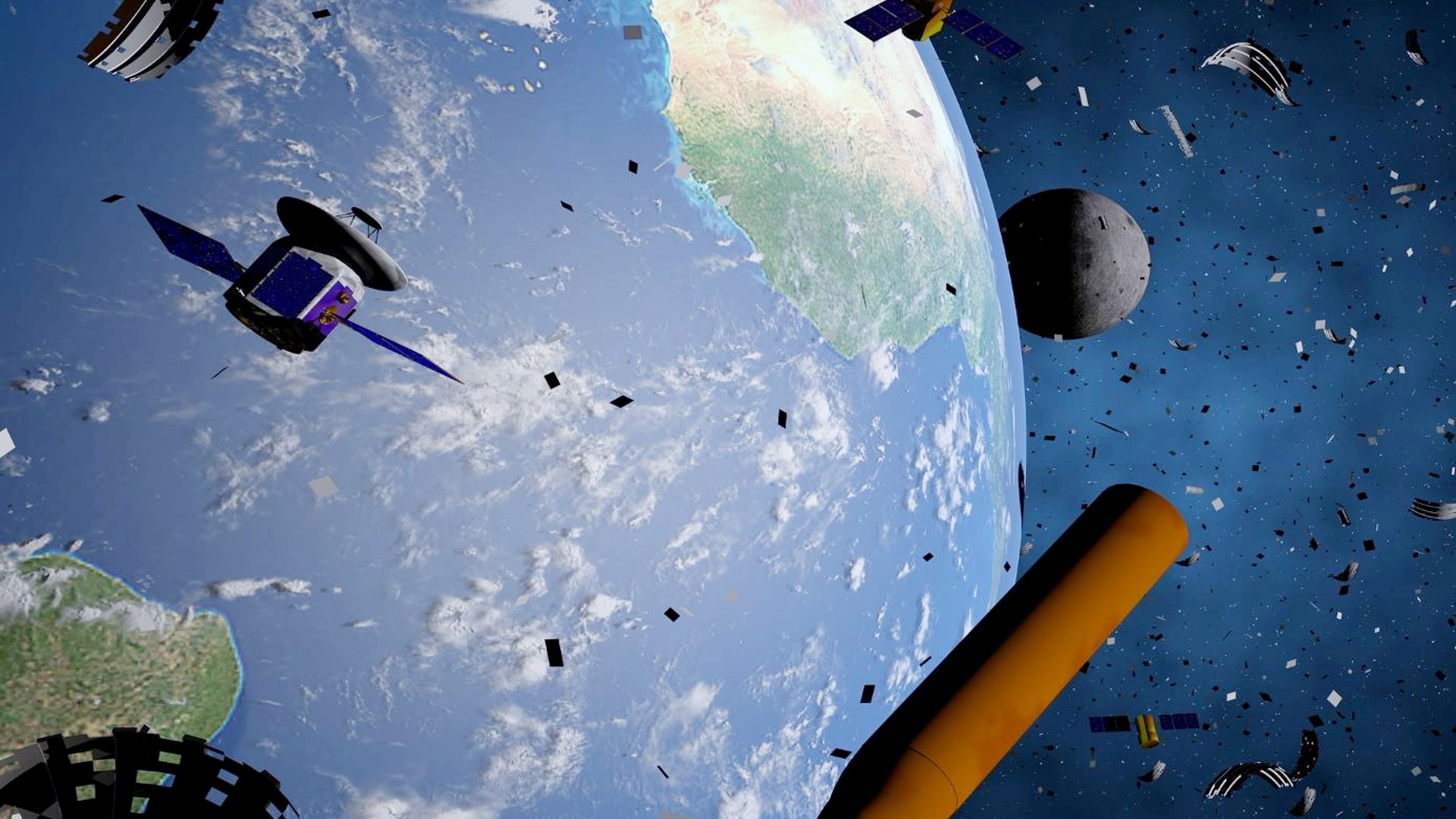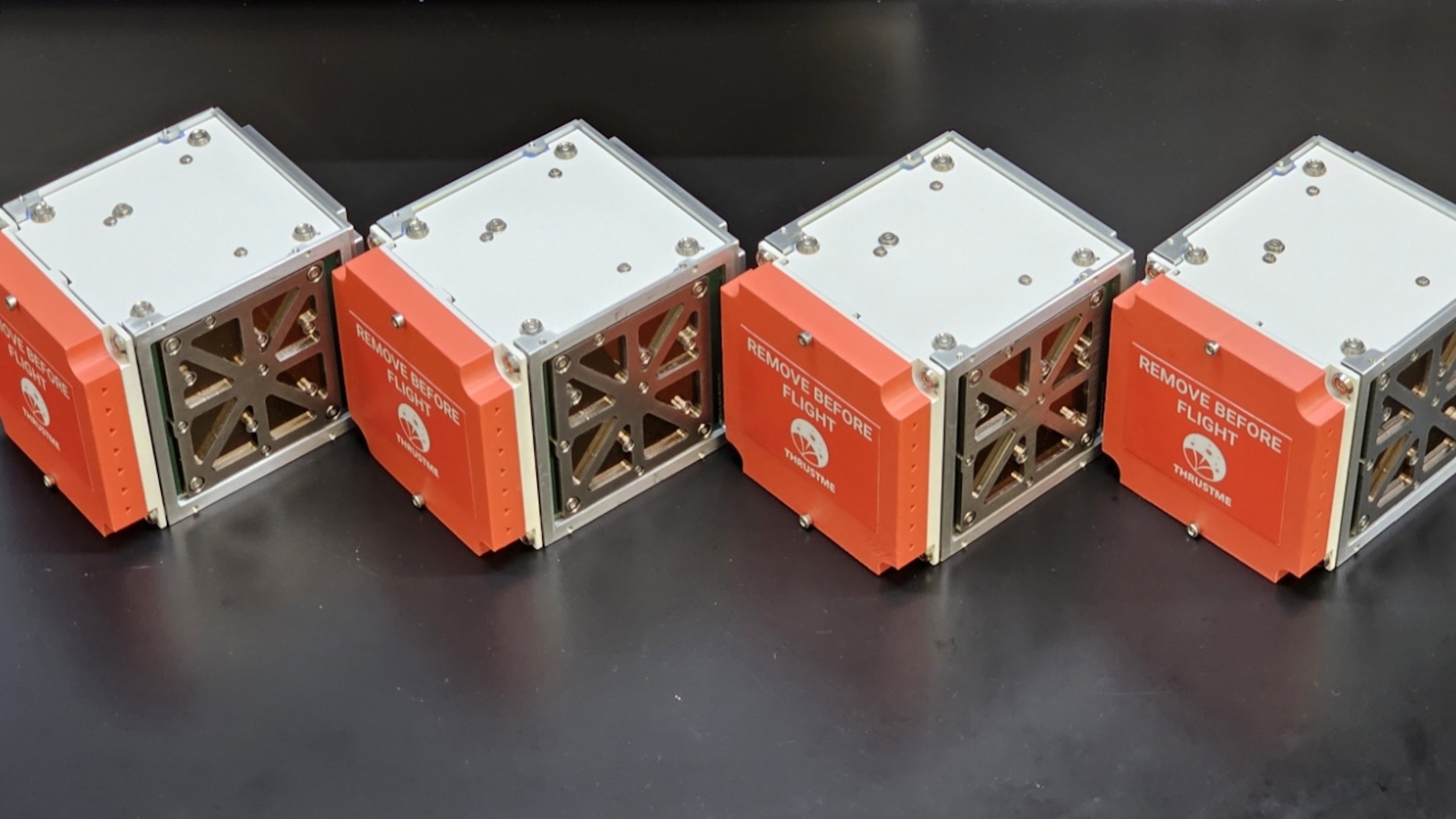Satellite companies may be starting to take the fight against space junk seriously
A move toward increased satellite maneuverability is a step forward, but other challenges loom.

French startup ThrustMe has announced a jump in orders for its innovative iodine-based propulsion systems for small satellites. The interest indicates a shift toward a more sustainable space environment, according to the company.
ThrustMe has passed 200 orders, the company said in an Oct. 24 statement, representing a doubling of its order book within just four months. The company’s 4-inch-by-4-inch-by-4-inch (10 centimeters by 10 cm by 10 cm) NPT30-I2 electric thruster — which was first tested in 2020 and uses relatively cheap and abundant iodine, instead of the more exotic xenon — provides small satellites with autonomous maneuverability, helping them avoid collisions and to deorbit when the time comes.
"This milestone not only mirrors the exponential growth within the space industry and the dawn of the industrial space era but also underscores the importance of accessible mobility in a sustainable space environment," the statement read.
Related: Kessler Syndrome and the space debris problem

The firm says the space industry is moving through a significant transformative phase, with growing numbers of launches and the emergence of new space actors. Sophisticated in-orbit maneuver capabilities will be needed for these entities in increasingly cluttered orbits to prevent collisions and help tamp down the growing threat of space debris.
Small satellites carrying their own propulsion system isn’t new, but it does reflect a growing trend. It is, however, one piece of a larger puzzle that needs solving to make space activities sustainable.
"Given that there are now several thousand Starlinks and several hundred OneWebs on orbit with propulsion, I'm not sure how much of a change this by itself represents, but I do think we have seen an overall trend towards more satellites having onboard propulsion," Brian Weeden, director of program planning for the nonprofit Secure World Foundation, told Space.com, referring to the broadband megaconstellations run by SpaceX and OneWeb, respectively.
Get the Space.com Newsletter
Breaking space news, the latest updates on rocket launches, skywatching events and more!
Weeden noted that satellite propulsion used to mean large, expensive chemical thrusters, which were out of reach for many smaller satellites. "But there's been a real shift in the reliability, feasibility and cost of electric thrust that makes it possible now to add maneuverability to more satellites," Weeden said.
"I think in general this could be a good thing for space sustainability, as it means more satellites have the ability to remove themselves from orbit at end of life and also avoid potential collisions during their life, but it's not guaranteed."
And bbeing able to maneuver satellites is just one aspect of the complex issue that is managing low Earth orbit.
Earth-based observation is only able to track objects larger than 4 inches (10 cm). And, according to the European Space Agency (ESA), there are about 1 million debris objects between 0.4 and 4 inches (1 cm to 10 cm) in size. Furthermore, there are an estimated 130 million fragments smaller than 0.4 inches in orbit around Earth. Each of these is traveling at a speed of several kilometers per second and thus is capable of causing serious damage or creating more debris by making another space object, such as a satellite, break apart.
The good news is that satellites, as maneuverability has become the de facto standard, are increasingly no longer sitting ducks for hurtling space debris or other spacecraft. But this brings new challenges — for example, in the form of responsibility and developing expertise, said Weeden.
"It means a lot more companies who need to have in-house expertise on how to respond to close approach warnings and develop maneuver plans that won't disrupt mission ops or create another worse conjunction down the road," he said.
"That's a lot harder than it may seem, and it also means doing a lot of communication with other satellite operators."
Beyond the technological and physics issues, there are tricky social and political problems of national and international regulation and agreements on how to approach maneuverability.
"While being able to use propulsion on your satellite to maneuver is a good start, it still doesn't answer the question about who gets right of way and who needs to maneuver if there is a close approach between two active satellites," said Victoria Samson, director of space security and stability at the Secure World Foundation.
"That is still being worked out. Right now, the only example I know about where that has been determined is an agreement between Starlink and NASA where Starlink has said it will move if it gets close to a NASA object," Samson said.
"Obviously, bilateral agreements aren't going to solve this issue entirely," Samson added. The next steps will need to see national and commercial constellation operators come together to avoid damaging collisions of another sort.
Join our Space Forums to keep talking space on the latest missions, night sky and more! And if you have a news tip, correction or comment, let us know at: community@space.com.

Andrew is a freelance space journalist with a focus on reporting on China's rapidly growing space sector. He began writing for Space.com in 2019 and writes for SpaceNews, IEEE Spectrum, National Geographic, Sky & Telescope, New Scientist and others. Andrew first caught the space bug when, as a youngster, he saw Voyager images of other worlds in our solar system for the first time. Away from space, Andrew enjoys trail running in the forests of Finland. You can follow him on Twitter @AJ_FI.









